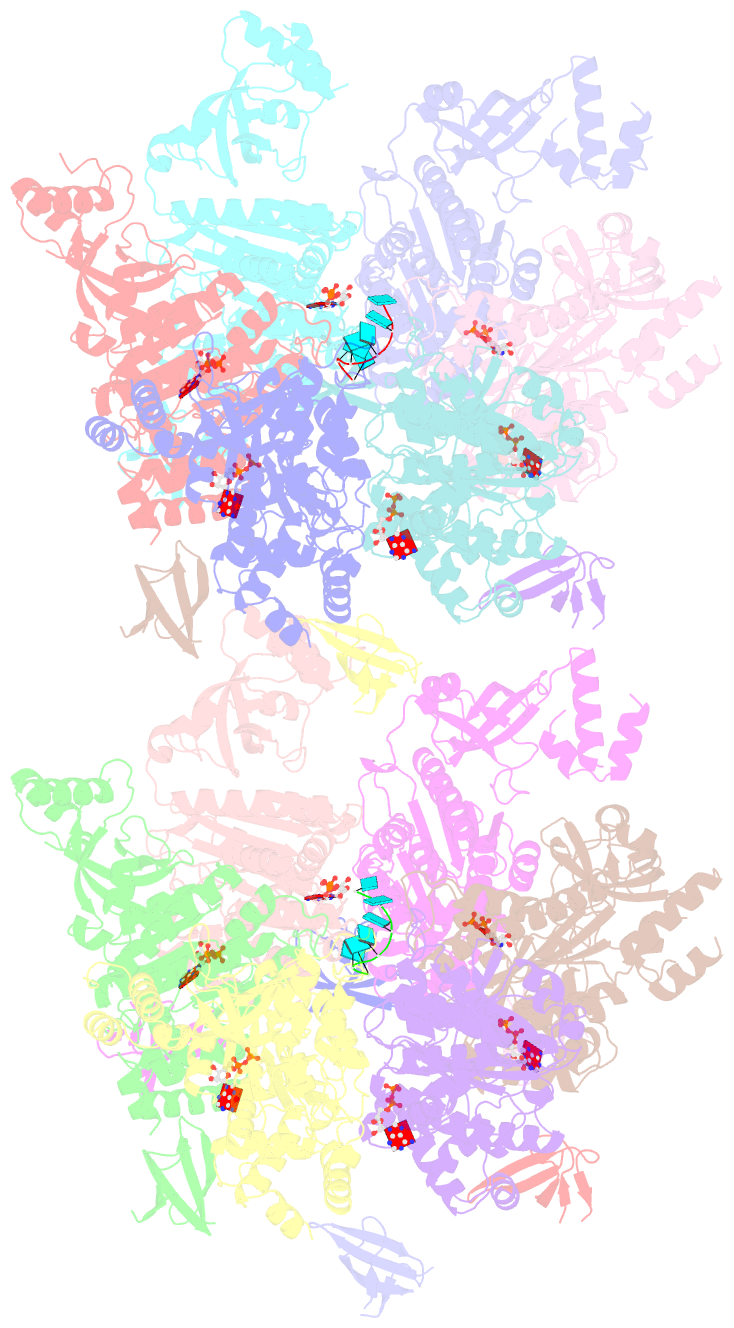Summary information and primary citation
- PDB-id
- 6duq; SNAP-derived features in text and JSON formats;
DNAproDB
- Class
- transcription-RNA
- Method
- X-ray (3.7 Å)
- Summary
- Structure of a rho-nusg kow domain complex
- Reference
- Lawson MR, Ma W, Bellecourt MJ, Artsimovitch I, Martin A, Landick R, Schulten K, Berger JM (2018): "Mechanism for the Regulated Control of Bacterial Transcription Termination by a Universal Adaptor Protein." Mol. Cell, 71, 911-922.e4. doi: 10.1016/j.molcel.2018.07.014.
- Abstract
- NusG/Spt5 proteins are the only transcription factors utilized by all cellular organisms. In enterobacteria, NusG antagonizes the transcription termination activity of Rho, a hexameric helicase, during the synthesis of ribosomal and actively translated mRNAs. Paradoxically, NusG helps Rho act on untranslated transcripts, including non-canonical antisense RNAs and those arising from translational stress; how NusG fulfills these disparate functions is unknown. Here, we demonstrate that NusG activates Rho by assisting helicase isomerization from an open-ring, RNA-loading state to a closed-ring, catalytically active translocase. A crystal structure of closed-ring Rho in complex with NusG reveals the physical basis for this activation and further explains how Rho is excluded from translationally competent RNAs. This study demonstrates how a universally conserved transcription factor acts to modulate the activity of a ring-shaped ATPase motor and establishes how the innate sequence bias of a termination factor can be modulated to silence pervasive, aberrant transcription.





